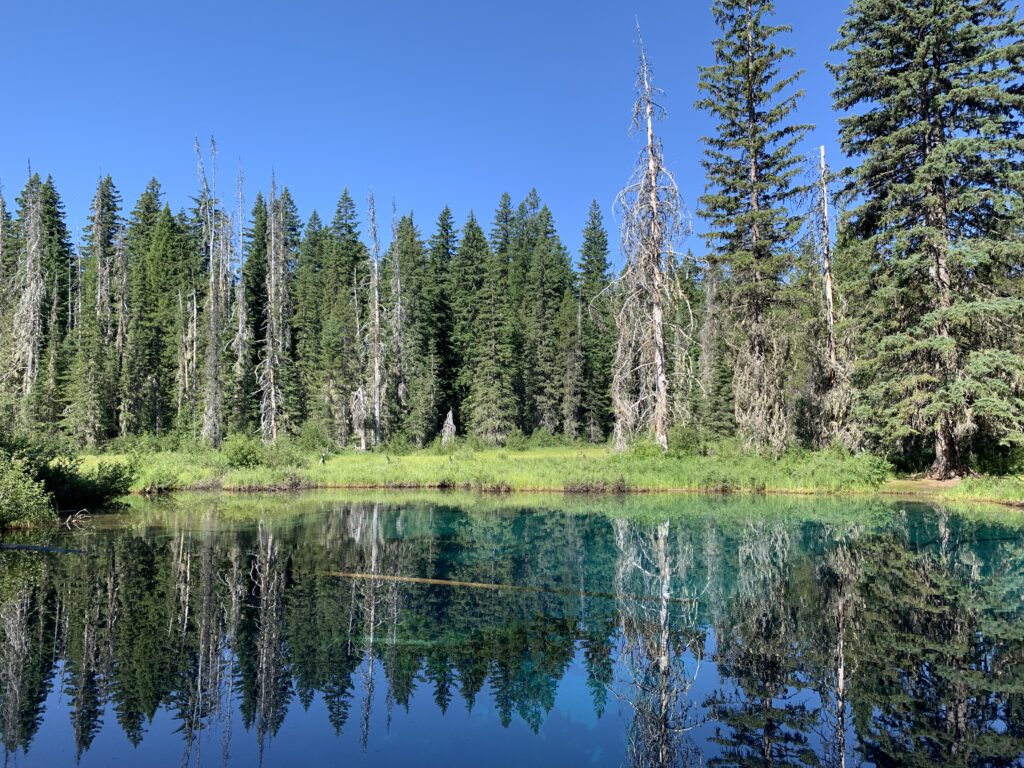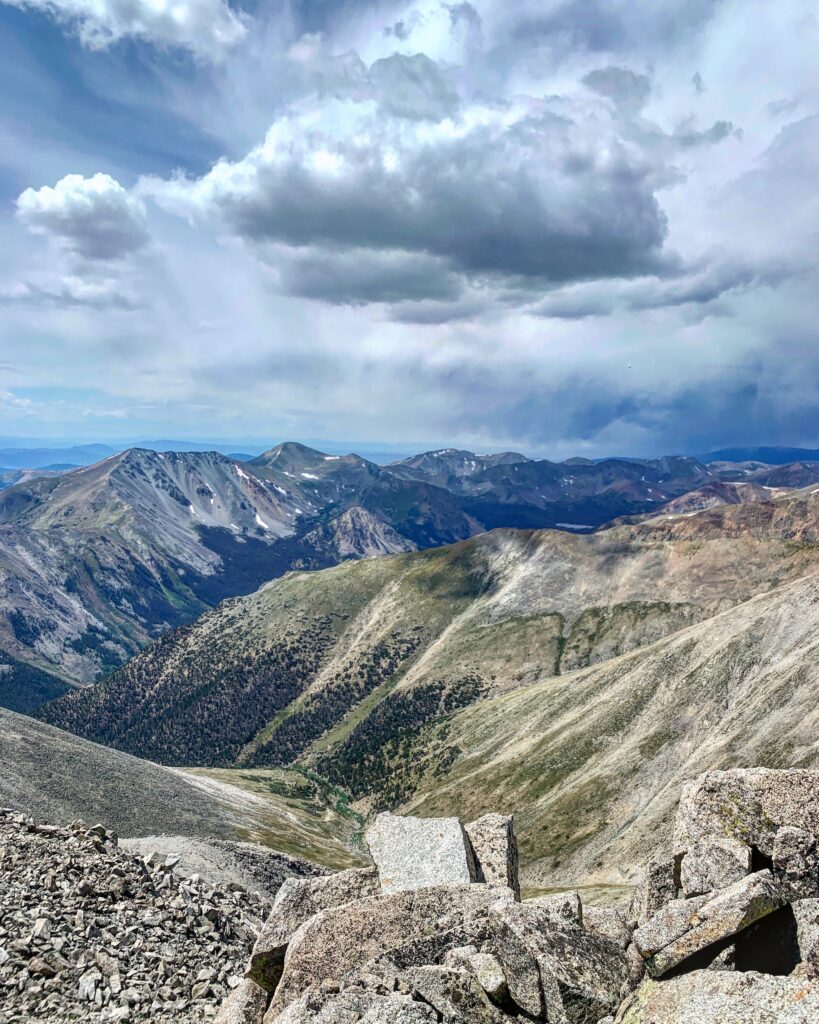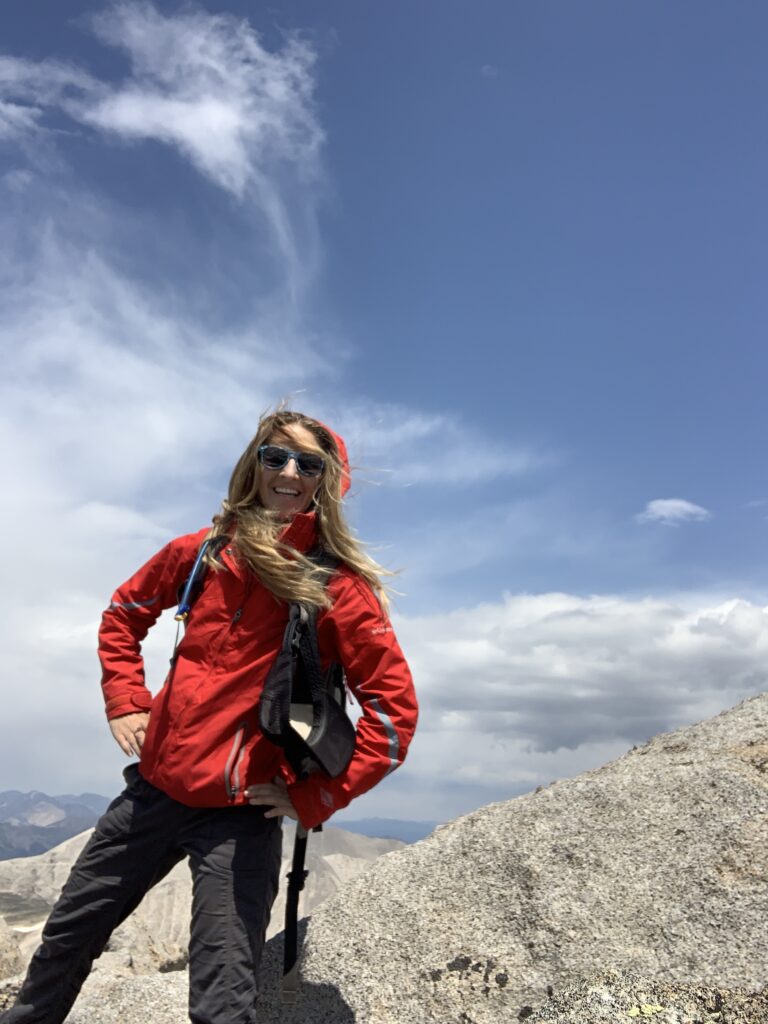
How to Stay Safe as a Solo Female Hiker [From Experience!]
The last time I counted, a few years back, I had hiked or trail-run over 1000 miles solo, cumulatively, including two 14ers in Colorado. I’ve since stopped counting but continued hiking solo.
As someone that didn’t consistently hiking until I was in my 20s and is a self-described scaredy-cat, I’m proud of all the solo-hiking I’ve done. I’m not proud because I think solo hiking as a female is “cool” but because I’ve developed sufficient skill and confidence to do something I love – hiking alone!
Interested in more about whether hiking as a solo female is safe? Check out my all-time most read article: , I’m a 5’4” Petite Female and I Hike and Trail Run Solo.
The following are my top tips for staying safe as a solo female hiker, based on years of hiking solo and educated myself via courses, more knowledgeable friends, and reading.
10 Safety Tips for Solo Female Hikers
Wear Good Shoes & Clothing
Creepy men and wild-animal attacks tend to be the risks that infiltrate solo female hikers minds the most – myself included. But the reality is, in most cases, there is a much higher risk of getting seriously harmed because of an injury or weather (especially if you get lost). If you get injured while hiking, it’s likely going to take you a lot longer than planned to get off the trial, whether walking out or having an emergency crew come get you. Weather can also change quickly especially when night falls.
Minimizing the risk of injury is one key to a safe solo hike. Two of the simplest ways to minimize this risk: (1) wear reliable hiking shoes; and (2) wear/bring layers that are appropriate for the weather. If you’ve read any of my posts here before, you’ll notice I preach the gospel of good shoes and clothes often. That’s because it is important.
Good shoes significantly decrease the likelihood of slips and falls by a lot. Gym sneakers just are not designed to provide trail traction. When I’m walking along a trail with a steep drop-off, one of the mantras I repeat in my head is: “just walk, trust your shoes, trust yourself.” Dressing appropriately for solo hikes helps regulate body temperature, preventing hypothermia or overheating. Additionally, bringing layers is important so you can adjust as the weather changes.
Tip: Having appropriate attire doesn’t mean you have to buy the most expensive items, just items that are suited for the type of hiking you’ll be doing in the weather you’ll be doing it in.
For more on shoes and hiking clothing, check out these posts: What to Wear on Day Hikes: A Guide for Women and Hiking FAQ: Boots or Shoes or Trail Runners for Hiking?
Psss….Want to see the hiking gear I use and recommend? Browse it in my Rockporch locker here, or here:
Tell Someone Where You Are Going
Let a responsible friend or family member know where you are going, including the trail you will be on, and when you expect to be back. If you don’t return, they should call 9-1-1 who will connect them to the right authorities. Lives have been saved by hikers letting loved ones know their plans. Interested in how outdoor search and rescue works? This is an interesting read: Outside Magazine: How Backcountry Search and Rescue Works.
Tip: Make sure to give some wiggle room when giving timing estimates. I’ve rarely finished a hike exactly when I thought I would. Also, account for any driving time where you won’t have service.

Bring an Offline Map
Today, most of us do our primary research online and are in the habit of being able to just quickly Google something we are uncertain of. Don’t rely on online maps or navigation when hiking be sure to have an offline map of the trails you’ll be on. Many, if not most, trails do not have service.
Side note: I use apps a lot but am also still a huge fan of hiking guide-books like the 60-Hikes Series for a better big picture overview and their browsability.
The paid versions of AllTrails and Gaia, hiking apps both provide the opportunity to download maps to your phone that you can use to navigate and identify where you are on the trail. I use both apps for research and download maps on Gaia. You can also take screenshots or photos of maps ahead of time. Just do not rely on being able to get online to navigate and make sure you have the offline maps before you start driving since you may not have service at the trailhead.
If there’s a map at the beginning of the trail, I always take a photo, even if I have a map downloaded. When it comes to solo hiking, back-ups increase safety.
The best practice would be to also carry a hard-copy map but if you don’t carry one on every hike, at least carry one: in new areas, on big hikes, and in cold weather (cold weather and phone batteries don’t play well together).
Carry Safety Devices
I typically like carrying two types of personal safety devices on solo hikes, a noise-based device and weapon. Noise based devices will draw attention when there are other people nearby on the trial. Weapon-based devices are to deter an imminent attack by a person or animal and would be particularly useful where no one else is around.by a person or animal. Of course, never use a weapon against a person or animal unless you truly need to for self-protection.
For noise-based devices, I’ve historically used this Sabre clip-on device, but have had it come unclipped from my back-pack and pants a few times. (It’s a decently strong clip but I’m not always gently when throwing down my pack or moving around.) I’ve just started using a She’s Birdie device which has more staying power because it screws on.
For pepper-sprays, I typically carry a full-sized Sabre gel pepper spray (like this one) and/or bear spray. Bear spray is a two-for-one since it could be used against a bear or a person. There are plenty of brands other than Sabre that make pepper spray, but it’s not that has a good reputation and that I’ve used the most ever since being given one by a friend’s mom a few years back.
There are, of course, other weapon choices as well, but I’d advise two things if you move beyond pepper sprays: (1) do your research and make sure what you are bringing is legal where you are hiking; and (2) only bring a weapon that you are very well trained in using and prepared and able to use quickly with good judgment under pressure.
Tip: Make sure your safety devices are quickly accessible, that you’ve practiced using them, and that they are not expired. Hopefully, you never need to use them, but if you do, you’ll need to do so quickly.
Ease In
Often people research solo female hiking safety because they are considering hiking alone but a little nervous. Nerves are completely normal! I still get them when I haven’t solo-hiked in a while. Easing in by starting with smaller hikes in familiar areas is a great way to develop solo female hiking confidence.
Starting small allows you to build positive momentum towards tackling bigger and bigger hikes solo (IF that’s what you want – absolutely nothing wrong with just enjoying small hikes alone!) In contrast, if you go with an overly ambitious first solo hike in the middle of nowhere and don’t enjoy it, it can deter you from hiking alone in the future.
The following are some options for easing in if you’ve never solo-hiked before:
- Walk on a trail in a local park in an area of your city you feel safe in
- Go on a very short-hike that you know will be easy for your fitness level
- Hike a trail you’ve done with a group previously
- Pick a hike at a national park or well-traveled state park
For most people, having a few other hikers around on your first solo female hike is comforting and provides an added layer of safety. By choosing a first hike somewhere with other hikers, you get the benefit of alone time without feeling wholly isolated like on the well-titled History Show, ALONE.
Research Risks
Research your hike so you can be prepared for what you may encounter hiking and ensure that you are picking a trail that fits your skill level. Again, prepared = safe. A few recommendations on what to research:
- Weather on the day you’ll be hiking
- Length and elevation gain of your hike
- What animals are in the region and what to do if you encounter one
- Recent closures or changes (check the website of the park you’ll be in)


The photos above are from a 14er (Mt. Shavano) I hiked solo in Colorado. I started early because of the risk of afternoon storms and only spent a few minutes at the summit because you could see the storms rolling in (and feel the wind). Afternoon lightning storms in the CO mountains are an important danger to be aware of when hiking in the region
Take Educational Classes
Taking classes will help you gain confidence and skill to tackle solo hikes. Self-defense classes are great for the off-chance you have a negative human encounter (most fellow hikers you’ll encounter will be warm, friendly, and safe!). Local police departments and martial arts studios often offer self-defense classes. For picking up additional tips for handling unwanted encounters outdoors, I’ve also been enjoying following @adventuresofnik on Instagram lately.
I also highly recommend taking outdoor classes like survival classes, navigation classes, and first aid classes. These classes help prepare you for responding to the more likely dangers of the outdoors (which aren’t people). REI consistently offers a lot of class options across the US. Check out their offerings here.
Get First Person Accounts
First-person accounts can often provide you with more up-to date and nuanced information than blogs and guidebooks alone. A few places to get them: talk to friends that have done the hike, read online/app reviews, and call the park ranger (if there is one) for the area you’ll be hiking in.
If I’m scoping out a new solo hike in an unfamiliar area, when reading reviews, I scan for ones that mention safety, animal encounters (if any), and what other solo female hikers have to say about the hike. I also pay attention to how frequent and recent the reviews are, especially on AllTrails. A lot of reviews close in time to each other hints that it’s a popular trail while reviews that are weeks apart indicates that it is less heavily trafficked (or that it’s inaccessible because of weather).
Consider a Satellite Device
Satellite devices like the Garmin In-reach mini allow solo hikers to send text messages via satellite even when you are outside of cell service. Solo hikers often use them for peace of mind for themselves and their loved ones. They typically cost a few hundred dollars plus a relatively low-cost subscription fee.
I don’t have one currently but have done backpacking trips with people that do and am seriously considering getting one. I also think it’s a great tool in case you encounter someone else on the trial that needs assistance.
Be Cautious About Public Posts
As in real life, most people online are good, well-intentioned people but as the comment sections on social reveal, there are some sh*tty people out there. Be conscientious about what you post publicly online. Never post where you are or where you are headed publicly online.
I’d also recommend making sure there are no obvious patterns in your posts. For example, if you hike alone at the same place every Friday, do not post about it every Friday when you get back. It makes it easy to find you. Instead, don’t post about the location OR make it look like you only go there randomly.
If you are on Strava, consider using safety tools to your advantage. I think the best way is to just make places you hike regularly private or friends only posts (assuming your Strava friends are all people you know IRL.)
TRUST YOUR GUT!!
Repeat after me: when in doubt, peace out!
The likelihood of a solo female hike that you are prepared for is LOW, but the consequences are serious. If you are ever in doubt about whether you should start or continue a hike, don’t. Instead, just leave and go do something else fun with the time you had allotted to hike.
You may leave because something feels “creepy” or “off,” storm clouds are looking ominous, you’re feeling physically exhausted, or any other reason that gives YOU doubt. Your intuition is a tool. You will have plenty of other opportunities to solo-hike if you so choose. You do not need to prove anything to anyone. You are a bad-a$$ awesome human being whether or not you ever go on or finish a solo hike. And leaving when you don’t feel safe (for whatever reason) is a smart, bad-ass decision.
Gear Check
Want to see the gear I use and recommend? Check out my Rockporch.
Before embarking on your solo hike, make sure you have packed everything you need, including:
Hiking Shoes: Reliable hiking shoes or boots that provide support and traction.
Ten Essentials: The ten essentials for hiking are safety essentials for every hike. Read more here.
Safety Devices: Whatever legal safety devices that make you feel safer solo hiking.
Enjoy your hike and help protect our natural lands by following leave not trace principles (aka “LNT”)
